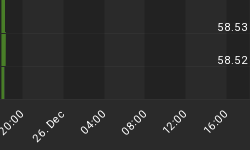I just handed in a manuscript for a new book which contains the following sentence:
"The image of McMansion ghost towns, once the wishful thinking of a tiny anticapitalist fringe, is suddenly a little too close for comfort."
I've been worrying that the "ghost town" reference was a little too extreme. But today's Wall Street Journal dispelled that fear with a front page article that's full, from title to concluding paragraph,of extreme housing bust imagery. Some excerpts:
After the Bubble, Ghost Towns Across America
...Since real-estate tanked, many new planned communities across the country are half-empty, with for-sale signs outnumbering residents by a large margin. Daily life in these developments seems a bit post-cataclysmic. Children play on elaborate but empty playgrounds. They walk their dogs past rows of shiny houses that have never been lived in. Voices echo up and down the block. Unfinished houses and vacant lots strewn with construction debris clutter the horizon.
Robert Waltenspiel lives with his wife and two daughters in a unfinished subdivision in Auburn Hills, Mich. Standing in front of his house, he can see more than 30 weed-choked lots where new houses were supposed to go. The developer halted construction more than two years ago. "As far as working on my yard and saying, 'Hey, neighbor, want a beer?,' that's not going to happen," says Mr. Waltenspiel, an account manager for Hewlett-Packard Co. The hot tub at the community center doesn't work. The communal fountains are dry. Mr. Waltenspiel's kids have no one in the subdivision to play with, so he has to take them to a nearby park for social interaction. His 4-year-old "will walk up to strange girls in the park and say, 'Hey, will you be my friend?' " he says. "A, it's adorable. B, it's sad."
In the past year, roughly 15% to 20% of residential developers have gone out of business, suspended operations or changed their line of work, according to an estimate by the National Association of Home Builders. The people who bought into these subdivisions encounter all sorts of other unexpected problems, including burglars looking to steal toilets, appliances and copper wiring. And blight. Krista Anderson, an administrative assistant, lives in a subdivision outside Phoenix where the developer suddenly halted construction last fall, leaving behind not just unfinished houses but also scaffolding, piles of cement and construction material that "is turning yellow and looks bad."
Many residents aren't sure exactly who is in charge of mowing the weeds, maintaining the street lights, cleaning up when someone uses open space as a dump. Some residents form especially tight bonds with neighbors 10 or 20 doors down the street. Others relish the peace and quiet.
"With my art and my books, I don't need to go outside," says Miriam Ramirez, who lives with her husband, a retired doctor, in a stalled subdivision in suburban Atlanta. "But not everybody's like that."
Her subdivision, Woodbridge Crossing in Smyrna, 15 miles from downtown Atlanta, was supposed to consist of several hundred garden-style houses. Instead, she lives on a street where most of the roughly 30 units have never been lived in. It's the only inhabited street. Paved roads surround acres of empty lots. At night, she says, Woodbridge Crossing can feel a bit like "a cemetery." One plus: She usually has the community swimming pool to herself.
...Now, many of the region's new subdivisions, with houses that can't be rented, much less sold, are forlorn monuments to disastrous real-estate forecasting. A subdivision called Tuscany, five miles west of Bentonville, was envisioned as an enclave of luxury homes with landscaping meant to evoke an old-world Italian village. Developers installed an enormous hand-built stone wall surrounding several hundred acres of what had been cow pasture. So far, only five houses have been built, and just two sold.
Carol Trees, who paid $570,000 for a 4,800-square-foot house six months ago, admits the solitude is a bit disconcerting. The good news is that her three children have the run of a pasture longer than several football fields. "We love it right now," says Mrs. Trees, a nurse practitioner. "We sit on our back porch and fantasize that we own all this land."
...The last seven months have been an odd existence. Chickens wander by from a nearby farm, poking around in the brush. Not long ago, someone broke into one of the unoccupied houses around the corner. Now the Pfluegers say they pay close attention to passing traffic, but hardly anybody passes by.
"There's just no noise," Mrs. Pflueger said.
BUY GOLD AND SILVER ONLINE AT GOLDMONEY
















